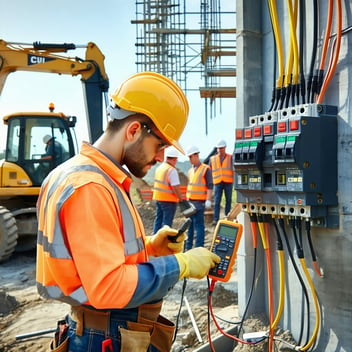One can safely assume that the construction industry as a whole has staying power. There will always be a need for new commercial and residential buildings. With such a continuous demand for construction, why is there a shocking lack of construction workers?
Many industries—including construction—were hit particularly hard by the COVID-19 pandemic and subsequent "great resignation." However, endemic issues within the construction industry itself made the strain on employment numbers comparatively higher than in other sectors.
In November of 2021, three out of every one-hundred construction workers quit their jobs and left the industry. That amounted to an average of 197,250 workers quitting that November alone. This demographic is a significant percentage of the workforce.
Additionally, consider that despite all the resignations within construction companies, the demand for new construction has only increased since the pandemic. These two conflicting forces—the lack of physical bodies and the increased demand for their labor—are causing a crisis among construction companies.
The construction industry is at an inflection point. There are serious problems that, Covid or not, would have eventually brought the industry to a crossroads. To better understand potential solutions for how to stop losing construction workers, we'll first have to look deeper at the underlying issues facing construction workers as a demographic.
The Construction Industry's Labor Shortage Precedes The COVID-19 Pandemic
Why was construction hit more complex by the COVID-19 pandemic relative to other industries? As it turns out, several factors influence the construction industry's labor shortage.
1. The Construction Industry Hasn't Recovered From The 2008 Financial Crisis
The construction industry was most adversely affected by the 2008 financial crisis. Where other sectors have grown past their 2008 peaks, the construction industry hasn't.
-
The total monthly valuation of construction projects has only ever hit 80% of the all-time high since the 2008 crash.
-
Few construction firms registered with the Inc. 5000—a catalog of the US's largest private companies—than before the 2008 crash.
2. The Number Of People (Mostly Men) Entering The Trades Has Been Declining
Over the past couple of decades, public schools, parents, coaches, and society-at-large have increasingly pushed young students toward earning a college degree and away from entering a trade.
In hopes of securing a higher-paying job and fighting inflation and stagnating wages, many young students haven't even considered the possibility of going to trade school instead of college.
Additionally, studies expect the number of retirees. In fact, by 2031, 41% of laborers currently working in the construction industry will have retired. Without a notable workforce to replace them, the labor shortage is on track to worsen.
If construction companies want to attract new workers to the industry, they'll need to recapture the attention of Millennials and Gen Zers.
What Does The Average Construction Worker Look Like?
Currently, the demographics of the average American construction worker looks like this:
-
93.8% of all construction workers are male, while only 6.2% of construction workers are female
-
Construction workers are 58.7% white, 24.5% Hispanic or Latino, and 10.7% are African-American
-
The average age of current construction workers is 38 years old
-
The average salary for a construction worker in the US is $29,144
-
Construction is notoriously one of the more dangerous jobs in the US, with construction workers 70% more likely to suffer a workplace injury on the job than in other occupations
What Can Construction Companies Do to Attract More Workers?
-
Offer Sustainable Wages That Meet Basic Human Needs
-
Diversify Across the Genders and Among Different Ethnic Groups
-
Use Technology And Automation To Make The Job Safer And Easier For Workers (Not Replace Them)
-
Offer Clearer Paths For Advancement To Higher Positions
-
Bring Higher Ethical Standards To Administration To Create Better Employment Conditions
-
Offer Benefits That Make Employees Satisfied Sticking Around
-
Market On The Platforms Gen Z and Millennials Use
The Construction Industry Is At An Inflection Point
The next ten years will be pivotal for construction companies. There are systemic issues that need to be addressed by higher-ups if the industry wants to attract new workers and replace the wave of retirees looming in the distance.
Are you interested in learning more about how Ving can help you improve safety and compliance in your workplace?
Schedule a discovery call with us today, and we'll answer all of your questions.
During our call, we'll discuss:
- Your specific safety and compliance challenges
- How Ving can help you overcome those challenges
- The benefits of using Ving
We'll also answer any questions you have about Ving.
So what are you waiting for? Schedule a discovery call today!
Roni Davis is a writer, blogger, and legal assistant operating out of the greater Philadelphia area. She writes for Mount Holly workers compensation lawyer Stan Gregory.






Leave a Comment